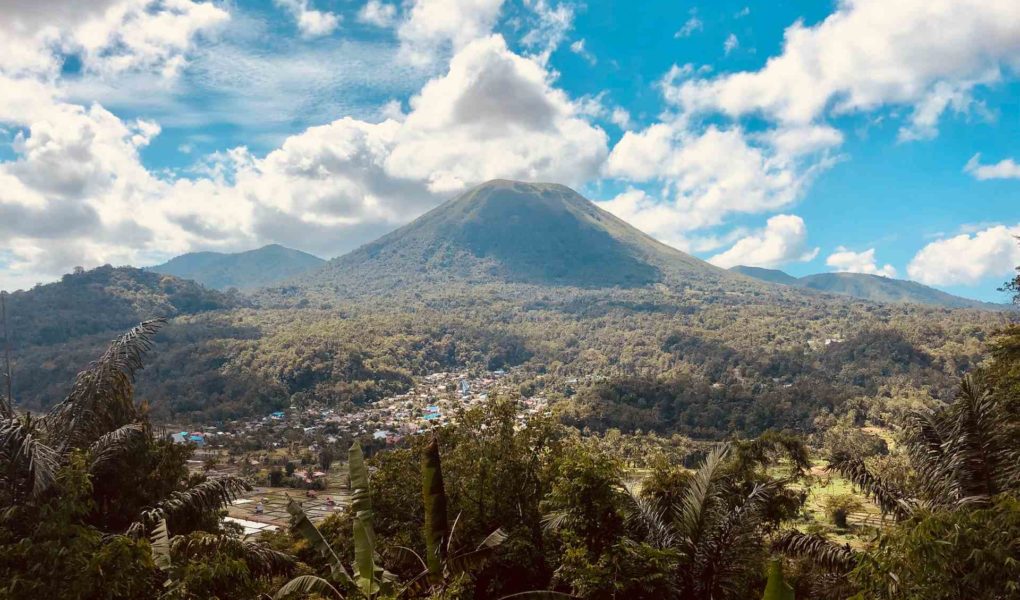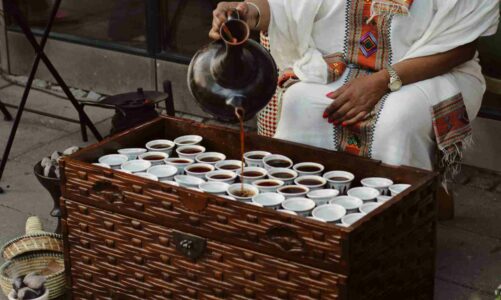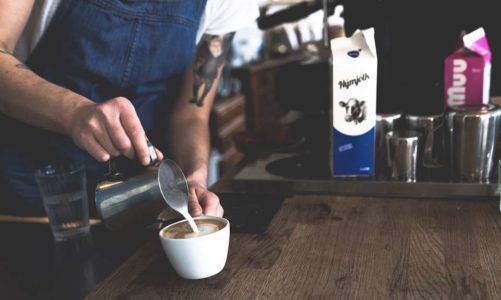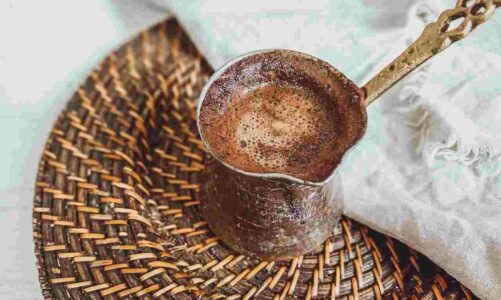Indonesia is renowned for its great-tasting coffee and popular coffee-growing regions, in addition to a rich culture and history surrounding coffee. Coffee made its way to Indonesia via the Dutch back in the 18th century and has since thrived, with Indonesia being the 4th largest coffee-producing country in the world.
You can read more about Indonesian coffee here.
Coffee Growing Regions Indonesia
Java
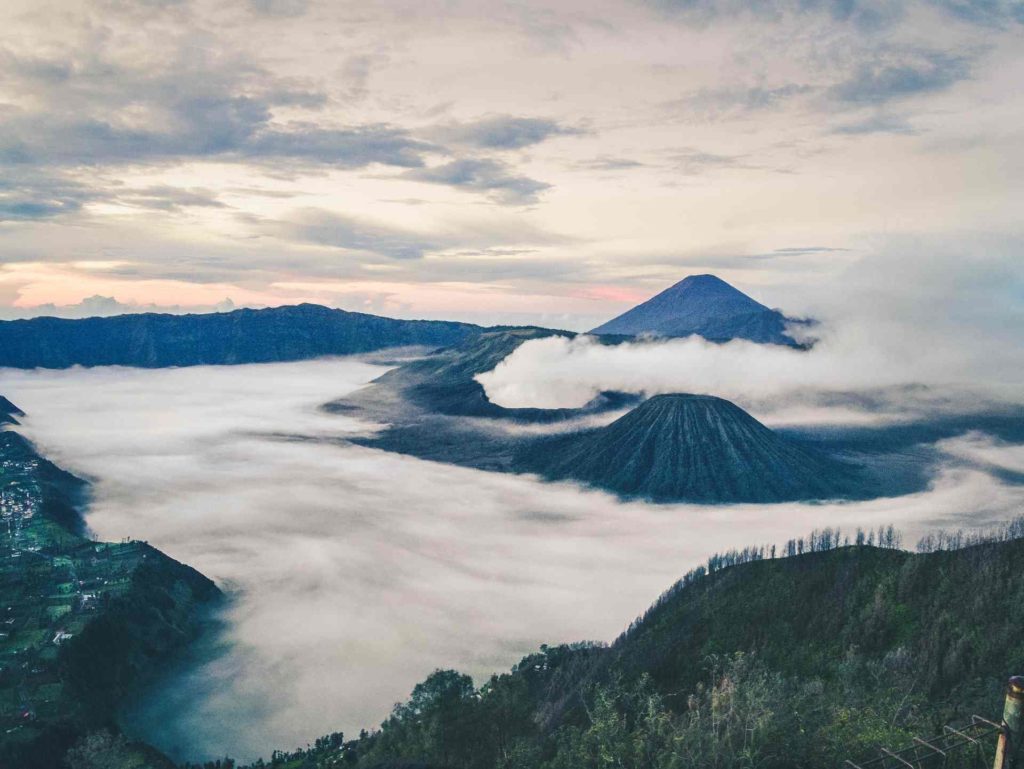
Java is one of the most popular Indonesian islands, and it has a lot of coffee plantations. As of today, some of the world’s finest coffee is made in Java this is why you’ll notice that the word java is synonymous with coffee.
Java is a popular producer of coffee and a major tourist destination, especially for coffee lovers. It is one of the most populous islands in the world, with over 140 million people living on it.
It is an island in the East Indies. The island was originally known as “Java Minor” and was part of the Kingdom of Sunda until it became a Dutch colony.
History of Java Coffee
Java has a rich coffee tradition that dates back to at least the 16th century. Documented history of Java as a coffee region started in the 18th century when the Dutch began cultivating Arabica beans in their colony, then known as Batavia.
Java Coffee & Plantations
Coffee plants were actually forcibly grown by the Dutch East India Company, instead of essential crops that locals needed. Java was the only island where coffee was grown initially until the potential for profit was realized and it was expanded.
Today, coffee plantations in Java are mainly owned by the government, which is understandable as coffee is one of Indonesia’s largest exports. There are 5 plantations in the Ijen Plateau which is located at around 1,300 meters in altitude. However, there are also independent farmers that are growing special and high-quality beans themselves.
The 5 largest coffee-growing estates include:
- Djampit
- Blawan
- Pancoer
- Kayumas
The coffee itself is harvested through the washed method, which is common in these regions, with the harvesting period usually occurring between May and June, and august and September.
You will find that Java coffee is full-bodied with notes of malt, nut, and chocolate. It also has low acidity, much different from other coffees grown throughout Indonesia. It does have some earthier factors but is not compared to other growing regions in Indonesia.
There are several old colonial-era plantations that currently reside on Java island and they are responsible for only a small amount of coffee production that focuses on premium-grade Arabica beans.
These high-quality beans are taken through a different process called monsooning. This is a process that leaves raw green beans to absorb the humid air in the rainy season, for up to four years. This allows for a much thicker and fuller bodied coffee, a stronger taste, and lower acidity.
Mocha Java Coffee
The Mocha Java coffee is a blend of Indonesian Java coffee and Yemen Mocha coffee. It creates a unique tasting profile and brings together two eccentric coffee types. It is said that the Mocha Java blend is one of the oldest coffee blends noted in history.
Sumatra
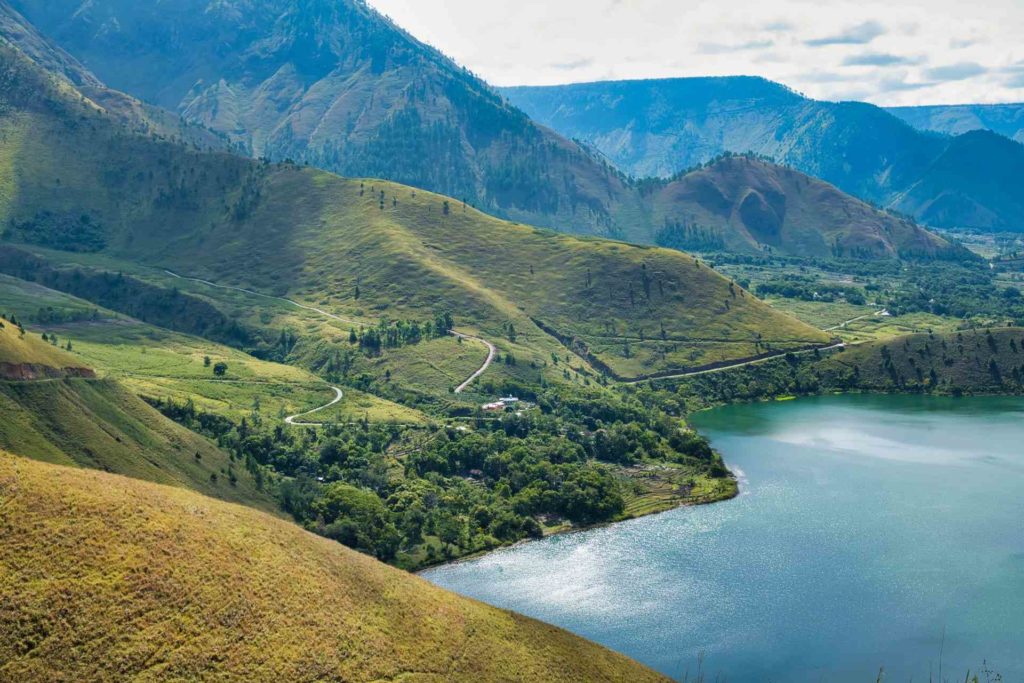
Sumatra is the 6th largest island in the world and produces some of the best tasting coffee in the world too. It is located to the west of Java and is also a popular location for tourists to visit, rich in cultural traditions.
Sumatra coffee beans are grown in the highlands which gives them that fruity and sweet flavor, which can be attributed to the rich volcanic soil in which they are grown.
History of Sumatra Coffee
When Sumatra started to grow coffee, it was grown at the largest volcanic lake in the world, Lake Toba, dating back to the early 1880s. Although coffee estates started in Java (after spreading from mainland Indonesia), their history is very closely related to that of Java coffee.
Sumatra Coffee Growing Regions
There are three main regions in Sumatra where coffee is grown:
Lintongnihuta Region
This region is located in the north, close to Lake Toba, the volcanic lake. The coffee produced here is generally medium-bodied with a low acidity. It presents notes of spice and cedar with an earthy aroma. The growing conditions in this region are ideal, especially for Arabica.
Gayo Region
This region grows coffee in the Lake Taware and Gayo Mountain locations which offer perfect growing conditions at an altitude of 1,500 meters.
Aceh Region
The coffee produced here is considered to be rare and expensive. It goes through an aging process to alter the flavors and requires great care and attention. It is generally used for 5-star restaurants and luxury services rather than a direct to consumer coffee.
Coffee of Sumatra
In general, the taste of Sumatra coffee is chocolaty and earthy, some have even said mushroom tastes. Similar to Java coffee, the beans here are considered to be low in acidity too. The harvesting process uses the Gilling Basah method, like many other regions in Indonesia. Some experts state that Sumatra coffee should be roasted within 3 months of harvesting due to the harvesting method used.
The main types of coffee grown in Sumatra are Robusta followed by a small amount of Arabic, with a very minute amount of Typica. You will also find there are varieties of Ethiopian coffee grown here including Abyssinia and Rambung. Most of the coffee plants are variations of different species, specifically used to avoid the coffee rust plague that swept Indonesia and wiped out Arabica almost.
Sumatra Dark Roast
There is a common misconception that Sumatran coffee is dark roasted. However, the type of roast is up to the roaster, not the coffee itself. Starbucks is well-known for selling Sumatra coffee – which is in fact dark-roasted. But that doesn’t mean other coffee from Sumatra is dark roasted too.
Sumatra Premium Coffee
Sumatra grows some of the world’s most premium coffees including Lintong, Ankola, and Mandheling. The Mandheling in particular is one of the top specialty coffees in the world, named after the local people of Mandailing.
The Mandheling coffee has a full body and provides a chocolatey and sweet flavor with complex notes. There have also been comparisons to syrup and molasses with this type of coffee.
Sumatra Coffee Fact
Sulawesi
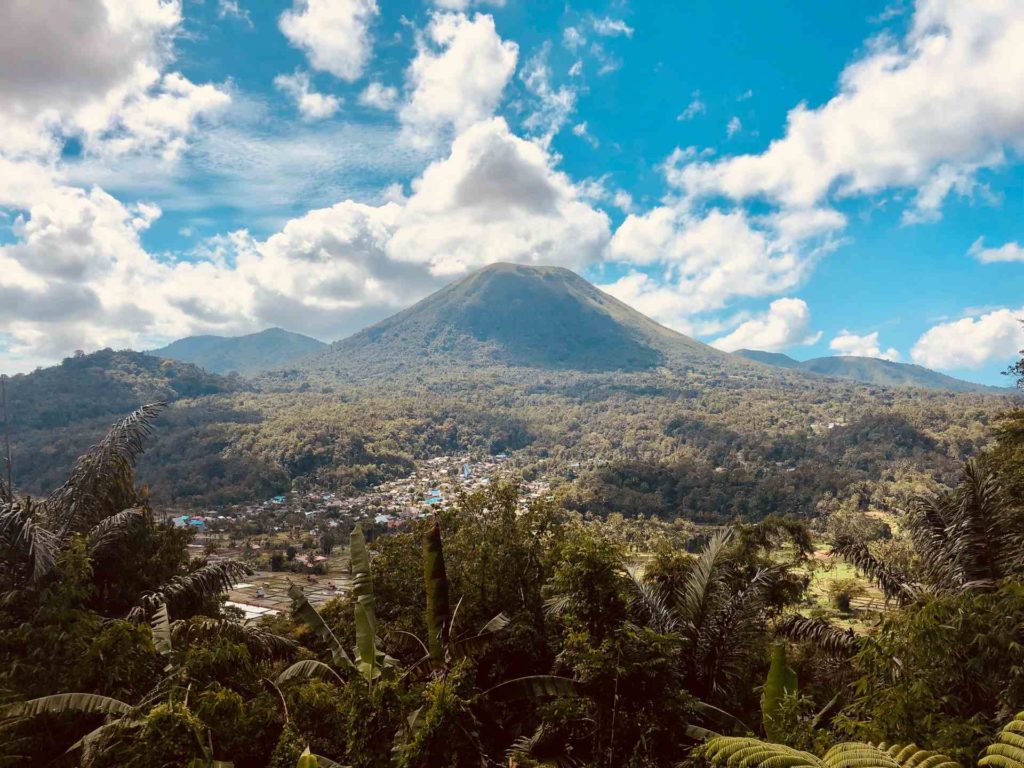
The island of Sulawesi is located in Indonesia and is the home of some of the world’s most sought-after coffee beans. It is a stunning island, also known as Celebes, one of the four Greater Sunda Islands, east of Borneo.
The coffee beans are grown in a fertile volcanic soil, which has a pH level that is perfect for growing Arabica beans. Sulawesi also has an ideal climate for producing quality coffee, with temperatures ranging from 19-30 degrees Celsius. The coffee plants in Sulawesi are grown in high altitudes about 4,500 – 6000 meters above sea level.
The history here is similar to the other regions but the region has rich traditions and culture for coffee embedded in its history. It is also unknown how coffee ended up in this location, there is no documentation.
Sulawesi Coffee Regions
The most popular region in Sulawesi is Toraja, which is well-known in Indonesia. It offers high elevations and rich growing conditions perfect for growing the popular Toraja coffee.
Coffee is also grown in Kalossi which is the southeast and is now starting to expand amongst independent coffee farmers in other regions across Sulawesi. Most of the locations where coffee is grown are home to small farms, offering unique and special varieties.
Most of the coffee plantations in Sulawesi are located in the areas of Mamasa, Kalossi, and Toraja. They are small and family-owned and they harvest and roast their own coffee. The majority of the coffee grown in Sulawesi is Arabica.
Sulawesi Coffee
The coffee has a silky and smooth texture with medium acidity, much different from other coffee types around Indonesia. Flavors include cinnamon, pepper, and spice, with some chocolate aromas.
The most popular coffee is Toraja coffee which is also known as Celebes coffee, and Kalossi coffee, both from the 2 main growing regions in this location. Toraja coffee has a fruity and chocolatey taste with a creamy body.
Again, the coffee here is processed using the Giling Basah method, much like in the rest of Indonesia. It is recommended that the coffee from this location is dark roasted to bring out the best flavors.
Sulawesi coffee is considered to be rare when compared to other growing regions. It isn’t difficult to find as a wholesale purchase but as a consumer, it can be difficult to get., It should also be consumed as soon as possible to reserve the best flavors.
Sulawesi coffee offers sweet, spicy, and smokey flavors with a chocolate and almond aroma. It is grown on small farms with some exceeding 6,000 meters above sea level, offering exceptional flavors and quality.
Bali
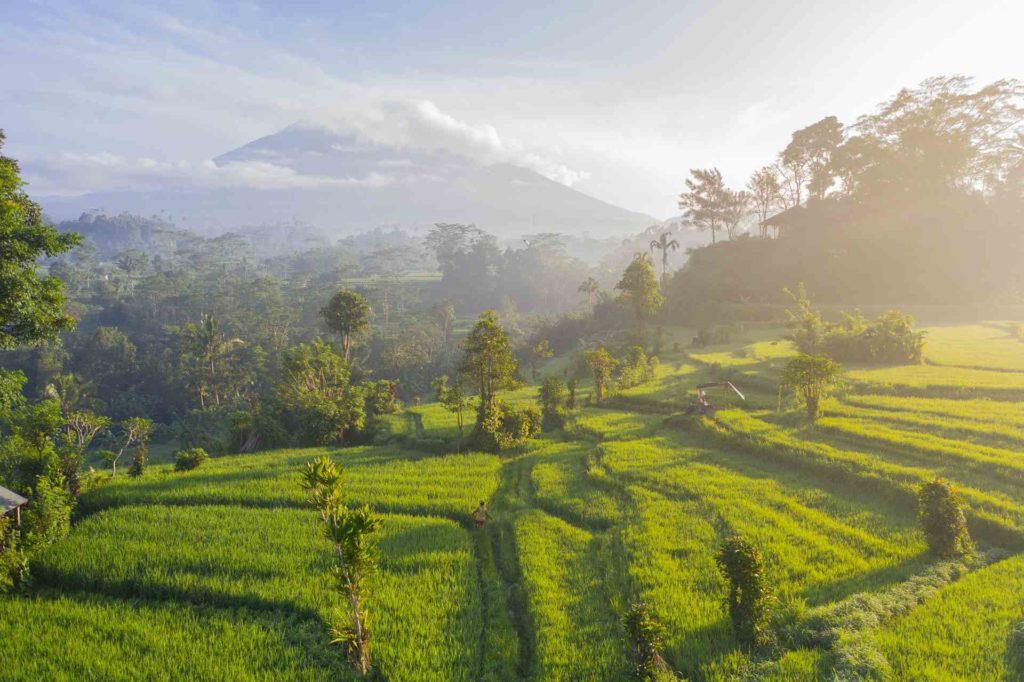
Bali is a small island in Indonesia. It has a population of about 4 million people and is also famous for its coffee. Not to mention it’s one of the most popular tourist destinations in the country. The coffee-growing industry in Bali is one of the most important agricultural industries there.
The culture of coffee in Bali is deeply embedded into society with the locals and tourists, coffee is a popular drink that is the focus of thousands of cafes across the popular tourist spots.
Coffee production in Bali takes place on plantations, smallholdings, and household plots that are often found on steep slopes. Most of the coffee farmers in Bali are members of the Subak Abian which is a traditional farming system in Bali.
The majority of the coffee grown in Bali is Arabica with Robusta being introduced more recently. Arabica coffees are processed using traditional methods such as wet hulling, semi-washed processing, and dry hulling while Robusta coffees are processed using wet hulling only.
Bali Coffee
The coffee in Bali is grown away from the built-up tourist areas in the central mountainous locations. The majority of coffee here has a rich aroma and offers wood and earthy notes.
The coffee is grown in the rich volcanic soils and is often grown in shade, also following the wet processing method. However, Bali doesn’t produce very large amounts of coffee, although the coffee they do produce, is excellent.
One of the most notable coffees produced here (although it is produced in other regions too) is the Kopi Luwak coffee or Cat Poop coffee. These is coffee cherries that get ingested by the Asian Palm Civet and pooped out, which are then used to make coffee.
The enzymes in the animal’s digestive system are said to have an effect on the taste of the coffee. The coffee is washed thoroughly and it is perfectly safe to drink, although it is one of the most expensive coffees in the world.
Coffee plantations in Bali produce a variety of beans, from the Arabica to Robusta, which can be roasted either dark or light. The climate, altitude, and soil are all perfect for growing coffee beans.
A great number of coffee plantations in Bali are located in the highlands of Kintamani which is located in between the Agung and Batukaru volcanoes.
What makes Bali a great coffee-producing region in Indonesia is the presence of volcanic ash in the soil which makes it ideal for growing high-quality coffee plants.
The strong flavor profile of coffee in Bali is thanks to the wet method process for their coffee bean. Bali coffee harvest period is typically around July to September and
The Final Sip
Those are 4 of the most popular coffee growing regions in Indonesia. As the 4th largest producer of coffee in the world, Indonesia produces some of the best-tasting coffee you can get your hands on, including some of the most expensive in the world (Kopi Luwak). Have you tried Indonesian coffee? Let us know below.

